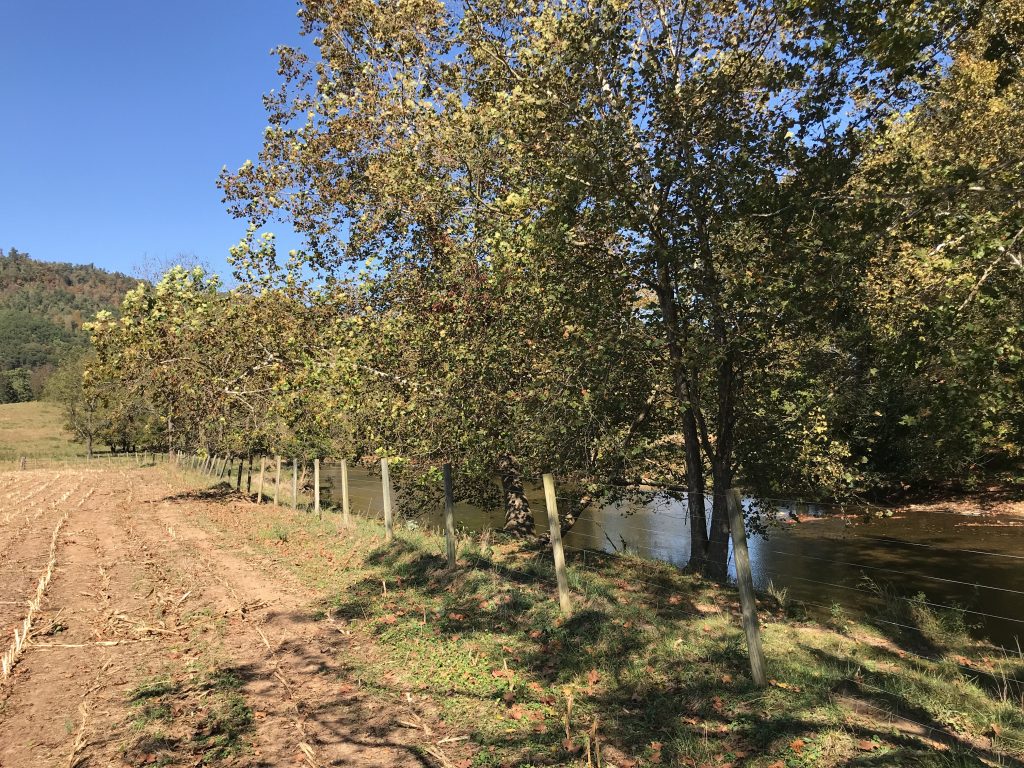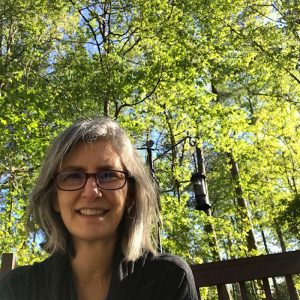
The North Fork of the Holston River is a natural resources powerhouse. A premier bass fishery and a public water supply for residents of Virginia and Tennessee, it also is a popular destination for paddlers and provides habitat for several rare — and colorfully named — native aquatic species: the shiny pigtoe, the Tennessee pigtoe, the turquoise shiner, the tangerine darter, and the eastern hellbender.
The river has also had its challenges over the years. In 1924, a muck dam storing the toxic by-products of a chemical factory collapsed, poisoning the river and killing 19 people. Fish caught below Saltville still cannot be consumed because of mercury contamination. Also, dangerous levels of E. coli bacteria have been detected in parts of the river due to agricultural and urban runoff, making water treatment facilities work overtime and putting recreational users on alert.
That is why two recent easements in Smyth County are good news for everyone who benefits from this unique ecosystem. The easements limit development on more than 630 acres in the Holston River watershed and provide riparian buffers on over five miles of the North Fork.
The new protections are the result of a partnership between the Virginia Outdoors Foundation (VOF) and the Natural Resources Conservation Service (NRCS). Neal Kilgore, VOF’s easement manager in Southwest Virginia, and Hunter Musser, a district conservationist in Smyth County for NRCS, teamed up to advocate for the river to area landowners.
“When I saw how much river frontage these properties had, I knew we needed to make the pitch for livestock exclusion,” Kilgore states. “I called up Hunter and we went to talk to three different landowners about water quality. We outlined the options available to them to implement livestock exclusion practices through NRCS and the Evergreen Soil and Water Conservation District.”
“Hunter’s ability to relate to the landowners made a huge difference in the outcome,” Kilgore adds.
Musser says that communication is key. “Many landowners are used to clearing areas along the banks and giving the cattle access to the water. They’re concerned that leaving a buffer area would mean the overgrowth of invasive plants. We needed to let them know that we encourage some management of the buffers.”

For the landowners, agreeing to the limitations of an easement meant taking a leap of faith.
“I wasn’t sure how much control we’d lose,” says Fada Lamie, who donated an easement with her husband, Charles, on their 150-acre farm in 2019. The farm is bisected by the North Fork of the Holston and contains over a mile of frontage. “Once we talked to Neal and got a clearer picture of what we needed to do, it was something we became comfortable with.”
About a mile and a half from the Lamies’ farm, another four miles of riverbanks curve through John and Kimberly Clark’s property. “We had heard about easements and had an interest in protecting the farm,” says John, whose 482-acre property has been in his family since 1904. “The cattle had always had access to the river, but we’ve been working closely with Evergreen to change that.” Through a grant from the state Best Management Practices Cost-Share Program, the Clarks have completed building an alternative watering system for their livestock and have fenced them out of the river.
In all, nearly 10 miles of the North Fork’s 43 miles in Smyth County now run through VOF-protected land. Thanks to outreach from Kilgore and Musser, protections on the Middle Fork of the Holston River are also increasing: Owners of a third property have nearly completed implementing livestock exclusion practices on 500 feet of frontage.
The three projects underscore how individual landowners can contribute to something bigger than their own properties when landscape-level strategies are considered, and when partner organizations work together.
“I’ve had the privilege of working with NRCS and the Evergreen Soil & Water Conservation District for over 20 years, and this is a real victory for water quality in the North Fork of the Holston,” Kilgore says. “The Clarks and the Lamies were also amazing partners. Even when the projects seemed to stall, they were patient enough to consider options and alternatives. Their commitment to the process and their patience is to be commended.”
